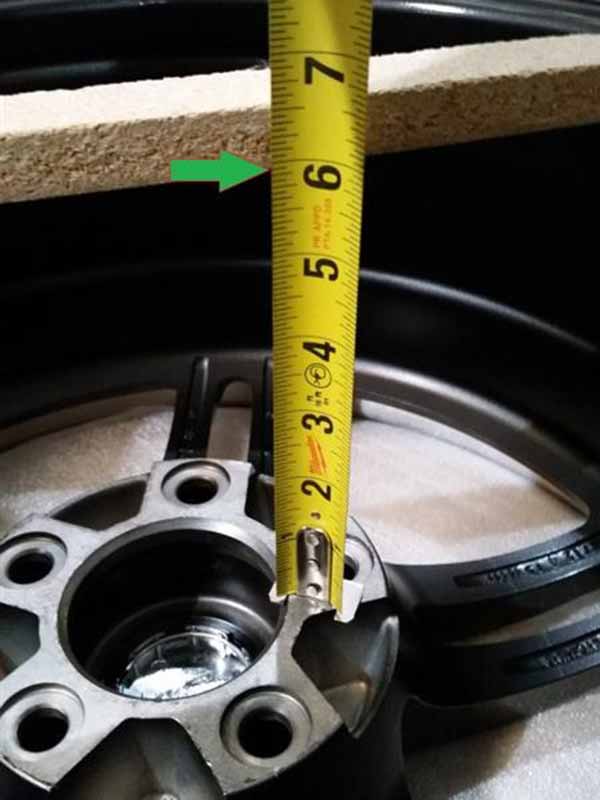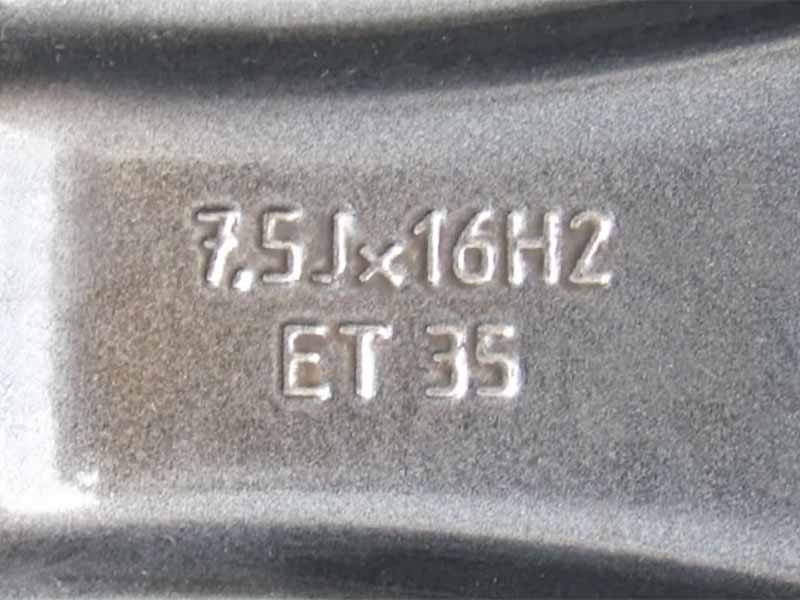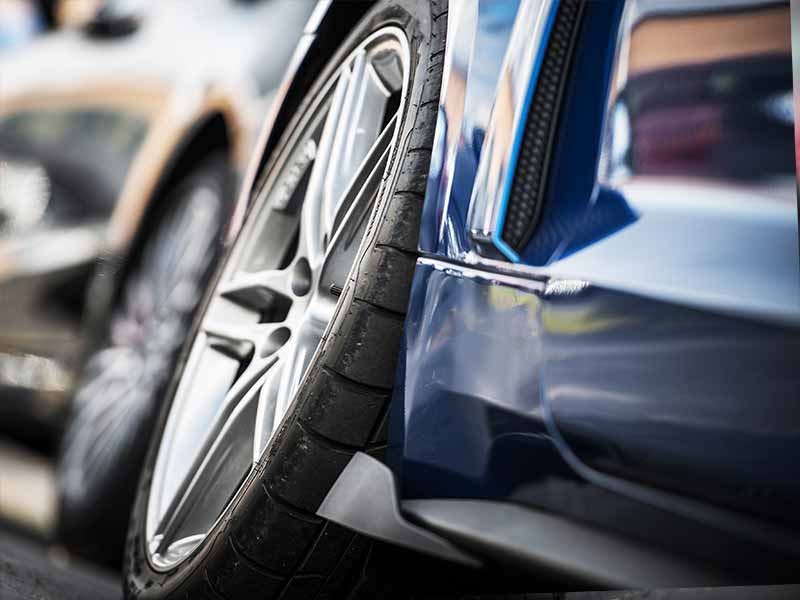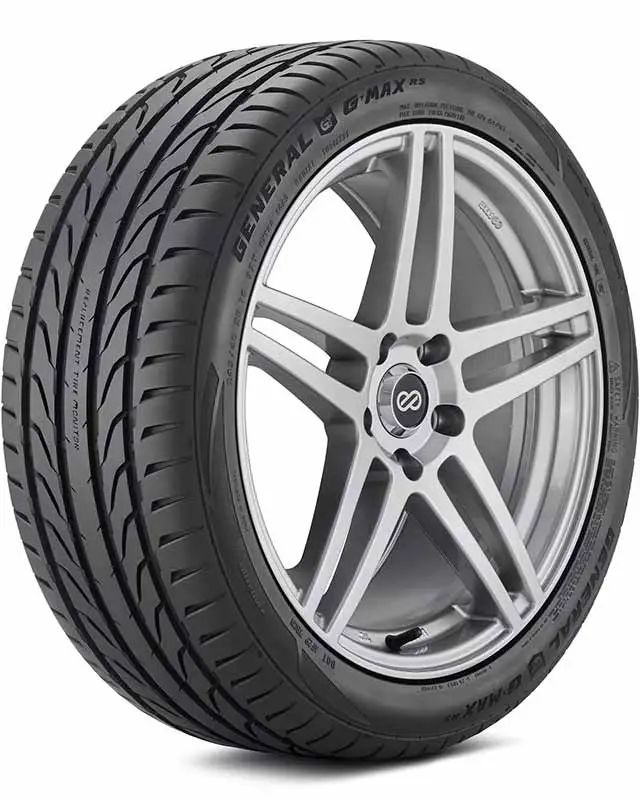A change in wheel offset can give your car or truck a more aggressive look with a wider stance or help fit custom wheels that have a different offset compared to the factory wheels.
No matter the reason, you need to make sure the offset is within a range that won’t rub your fender or suspension components.
How Is Wheel Offset Measured?
Wheel offset is measured as the distance between a wheel’s mounting surface and its centerline, usually in millimeters. It can be measured using a straight edge and ruler or by locating the offset information on the wheel itself.
In this article, we’ll explore step-by-step everything you need to know about measuring wheel offset, its effects on handling and performance, and why it’s important for both safety and style.
Let’s take a closer look.

How To Measure Wheel Offset
Here are the details and steps for measuring wheel offset:
Identifying The Mounting Surface
First up, you need to find the mounting surface of your wheel. What’s that, you ask? Well, it’s the flat part of the wheel that connects to the car or truck’s axle. It’s usually hiding behind the center cap or hub of the wheel, so you might need to remove those first.
Measuring The Distance From The Centerline
Now that you’ve found the mounting surface, it’s time to do some measuring. You’ll want to measure the distance from the mounting surface to the centerline of the wheel. The centerline is an imaginary line that divides the wheel into two equal halves. Here’s a step-by-step guide to help you out:
- Lay your wheel flat on the ground or on a table with the mounting surface facing up.
- Take your measuring tape or ruler and measure the total width of the wheel. Be sure to include the entire width, from one edge to the other.
- Divide the total width by 2 to find the centerline. For example, if your wheel is 8 inches wide, the centerline would be at 4 inches.
- Next, measure the distance from the mounting surface to the centerline. This is your wheel offset.
Now you’ve got your wheel offset! Keep in mind that the measurement might be in millimeters, so if you’re used to inches, you might want to convert it.
Wheel Offset Calculator
How To Measure Rim Offset With Tire On
So, you want to measure the rim offset without taking the tire off? No problem! We’ve got you covered. Just follow this simple guide, and you’ll get your rim offset measurement in no time.
Tools Needed
Before we get started, let’s make sure you have the necessary tools handy. You’ll need:
- A straight edge or level (like a yardstick or a piece of wood)
- A ruler or measuring tape
Step-By-Step Guide
Here’s how you can measure the rim offset with the tire still on:
- Park your car or truck on a level surface to ensure accurate measurements.
- Grab your straight edge and place it flat against the outside of the tire. Make sure it’s long enough to extend beyond the top of the wheel.
- With your ruler or measuring tape, measure the distance from the straight edge to the mounting surface (the flat part that connects to the axle). To find the mounting surface, look for where the wheel meets the brake rotor or drum. This is your “tire protrusion.”
- Now, let’s find the wheel’s centerline. Measure the total width of the wheel, including the tire. Divide that number by 2 to find the centerline. For example, if your wheel and tire together are 10 inches wide, the centerline would be at 5 inches.
- Subtract the tire protrusion (step 3) from the centerline (step 4) to get your rim offset. For example, if the centerline is 5 inches and the tire protrusion is 2 inches, your rim offset would be 3 inches (5 – 2 = 3).
What Is Wheel Offset Measured In?
Let’s dive into the world of wheel offset units and learn a bit about positive, negative, and zero offset, too. Understanding these units will help you make sense of your measurements:
Units Of Measurement (Millimeters)
Wheel offset is usually measured in millimeters (mm). This is because millimeters are a smaller unit than inches and can provide more precise measurements. In the tire and wheel industry, it’s common to see measurements like 35mm, 45mm, or even -10mm. So, when you’re dealing with wheel offsets, think millimeters!
Explanation Of Positive, Negative, And Zero Offset
Now that we know wheel offset is measured in millimeters let’s talk about the types of offset you might come across. There are three main types: positive, negative, and zero offset.
- Positive Offset: This is when the mounting surface is closer to the outside (road-facing side) of the wheel. In other words, the mounting surface is more toward the front of the wheel. Positive offset wheels are common in most modern cars, as they provide better handling and fuel efficiency.
- Negative Offset: In this case, the mounting surface is closer to the inside (car-facing side) of the wheel. Basically, the mounting surface is more toward the back of the wheel. Negative offset wheels are often seen in off-road vehicles or trucks because they provide a wider stance and more stability on rough terrain.
- Zero Offset: This one’s easy! It’s when the mounting surface is right at the centerline of the wheel. Neither inside nor outside, it’s right in the middle.
How To Measure Wheel Offset In Inches
If you already have a wheel offset measurement in millimeters and want to convert it to inches, it’s super easy! Just divide the millimeter measurement by 25.4. For example, if your wheel offset is 40mm, you’d do the math like this: 40 ÷ 25.4 = 1.57 inches. Voila! Now you have your wheel offset in inches.
What Is My Factory Wheel Offset?
There are a few places where you can find your vehicle’s factory wheel offset. Here’s a list of options to get you started:
- Vehicle owner’s manual: One of the easiest places to find the factory wheel offset is in your vehicle owner’s manual. Check the “Wheels and Tires” section for this information.
- Online forums and websites: Many car enthusiasts and experts discuss wheel specs in online forums or websites. Search for your vehicle’s make, model, and year, followed by the term “factory wheel offset.”
- Dealership or manufacturer: If all else fails, you can always contact your car or truck’s dealership or manufacturer. They should have the factory wheel offset info on hand.

Where Is The Offset On A Wheel?
Let’s explore how to locate the offset on a wheel and make sense of the markings:
Finding The Wheel Markings
Wheel manufacturers often stamp or etch important information, like the offset, onto the wheel itself. Here’s where you can usually find these markings:
- Backside of the wheel: Most of the time, you’ll find the wheel offset marking on the backside of the wheel, near the center hub area. You may need to remove the wheel from your car or truck to see the marking clearly.
- Spoke area: Sometimes, wheel manufacturers place the offset info on one of the spokes of the wheel. Look for any stamped or etched markings on the spokes.
- Wheel rim: Occasionally, the offset information can be found along the inside rim of the wheel. This location is less common but worth checking if you can’t find it elsewhere.
Understanding The Markings
Once you’ve found the wheel offset marking, you might see a number followed by the letters “ET” or “OFFSET.” The number represents the wheel offset in millimeters. For example, if you see “ET45” or “OFFSET 45,” it means the wheel has a positive offset of 45 millimeters. Keep in mind that if the number has a “-” symbol before it, like “-12,” it indicates a negative offset.
Decoding Other Wheel Markings
In addition to the offset, you might also see other markings on your wheel. These can include:
- Wheel diameter: The size of the wheel measured in inches (e.g., 17, 18, or 19).
- Wheel width: The width of the wheel measured in inches (e.g., 7, 8, or 9).
- Bolt pattern: The arrangement and number of lug holes (e.g., 5×114.3, which means five lug holes with a 114.3mm diameter circle).
How Does Wheel Offset Affect Handling And Performance?
Let’s go through the key points to better understand the relationship between wheel offset and your car or truck’s performance:
Positive Vs Negative Offset
Remember that a wheel’s offset is the distance between its mounting surface and its centerline. Positive offset means the mounting surface is closer to the outside of the wheel, while negative offset means it’s closer to the inside. Here’s how these different offsets can affect your ride:
- Positive offset: Wheels with a positive offset generally improve handling and stability because they maintain your vehicle’s suspension and steering geometry. However, if the offset is too positive, it can cause rubbing against the fender or suspension components.
- Negative offset: Wheels with a negative offset can provide a more aggressive appearance and a wider stance, but they can negatively affect handling and lead to increased tire wear. Additionally, the extra stress on the suspension components may lead to premature failure.
Impact On Handling
Wheel offset can directly impact your vehicle’s handling characteristics. Here are some of the ways it can affect how your car or truck drives:
- Steering response: A wheel offset that’s too far from the factory specs can cause your steering to feel heavier or more sluggish, making it harder to maneuver your vehicle.
- Cornering: A proper wheel offset helps maintain the ideal balance between tire grip and body roll during cornering, while an improper offset can lead to unpredictable handling and a higher chance of losing control.
- Stability: The right wheel offset contributes to overall vehicle stability, while an incorrect offset can lead to poor handling at high speeds and reduced braking efficiency.
Impact On Performance
Wheel offset also has an influence on your vehicle’s overall performance. Here’s how:
- Tire wear: Improper wheel offset can cause uneven tire wear, reducing the lifespan of your tires and potentially affecting your vehicle’s safety.
- Fuel efficiency: A wheel offset that’s too far from the factory specs can negatively impact your vehicle’s fuel efficiency, as it causes extra stress on the suspension and steering components.
- Acceleration and braking: An improper wheel offset can reduce acceleration and braking efficiency due to the changes in suspension geometry and increased stress on the vehicle’s components.
Resources
Below are some links you may find helpful when learning about tires
Final Thoughts
To wrap it all up, knowing about wheel offset is super important for anyone who owns or loves cars and trucks. We’ve looked at everything there is to know about wheel offset, from how to measure it to how it affects the way our vehicles drive. It’s good to remember that having the right wheel offset doesn’t just make our cars and trucks look cool, it also helps keep them safe and stable while we’re driving.
With this knowledge in your back pocket, you can make smart choices when you want to change or upgrade your wheels. You’ll be able to keep your car or truck running smoothly, looking awesome, and staying safe on the road.
Good luck and happy motoring.




